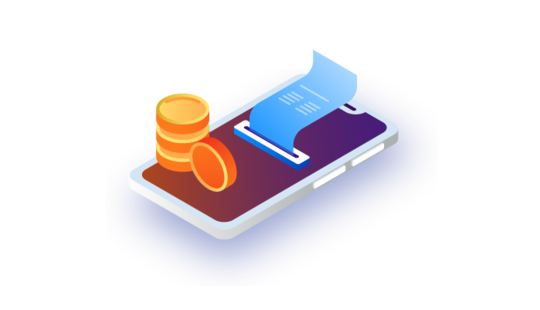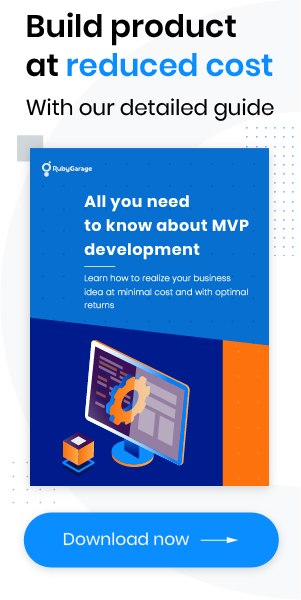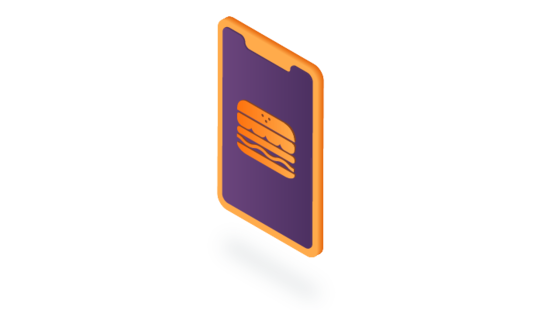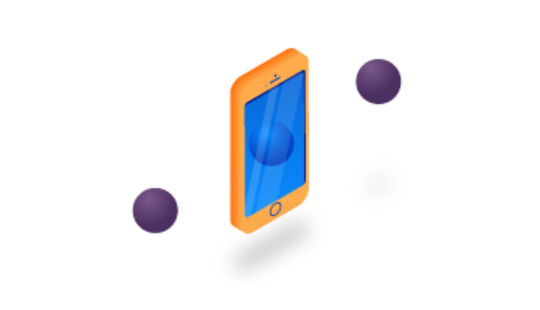-
Product Management
Software Testing
Technology Consulting
-
Multi-Vendor Marketplace
Online StoreCreate an online store with unique design and features at minimal cost using our MarketAge solutionCustom MarketplaceGet a unique, scalable, and cost-effective online marketplace with minimum time to marketTelemedicine SoftwareGet a cost-efficient, HIPAA-compliant telemedicine solution tailored to your facility's requirementsChat AppGet a customizable chat solution to connect users across multiple apps and platformsCustom Booking SystemImprove your business operations and expand to new markets with our appointment booking solutionVideo ConferencingAdjust our video conferencing solution for your business needsFor EnterpriseScale, automate, and improve business processes in your enterprise with our custom software solutionsFor StartupsTurn your startup ideas into viable, value-driven, and commercially successful software solutions -
-
- Case Studies
- Blog
An Extensive Guide to 8 App Monetization Models
The feeling when you launch your app is amazing, but another great feeling is when that app brings you money. In this article, we describe, analyze, and give real-life examples of top mobile app monetization models.
Some mobile apps are easy to monetize using versatile strategies that have been polished over time. Some kinds of app monetization have become an integral part of apps. For instance, we can’t imagine watching YouTube videos without built-in video ads at the start and sponsored goods from top bloggers. Go on reading to find out what monetization model will fit better for your app.
#1 In-app advertising
If you’re looking for a never-ending source of income, pay close attention to in-app advertising. These days, advertising in an app is a sure way to get profit, and it’s a prevalent approach among app developers. In 2018, mobile ad spending reached $147.6 billion and is forecasted to grow this year.
In-app advertising is a monetization model in which app developers receive money for showing third-party ads in their apps. There are several formats for in-app ads. Let’s take a look at them.

Interstitial ads
Interstitial ads, or full-screen ads, are catchy. Therefore, this is a popular ad format. Interstitials usually pop up between game levels, when you open a new tab, or when you load a page. According to a report by AdColony on the effectiveness of monetization models, interstitials have very high impression rates, making them perfect for any type of ad, whether text, image, or video.
This format is a sure bet, as users have to interact with interstitial ads and can’t just ignore them. When an interstitial pops up, users have only two options: tap the ad or wait and skip it. Interstitial ads usually appear between stories (like on Instagram), game levels (like in Magic Tiles), purchases (like on AliExpress), and so on. The click-through rate of interstitial ads is the highest among all rival formats.
Banner ads
Banner ads came to apps from web browsers and are the most commonly used ad type. Unlike banner ads on the web, in-app banner ads have a fixed position either at the top or bottom of the app. Often, these ads are animated and distract users from their main activity, causing irritation.
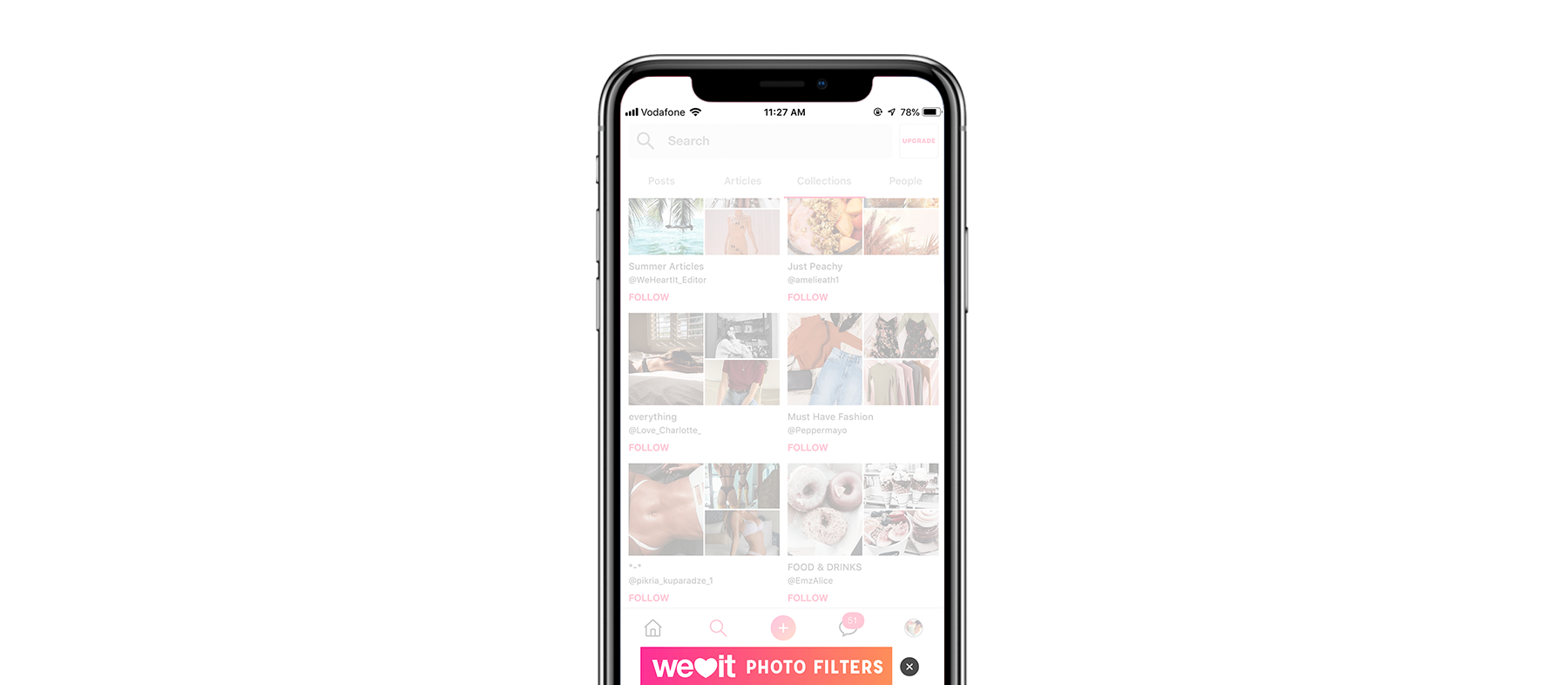
Video ads
Mobile video ads can be considered a subtype of interstitial ads, as they also take up all of the display. Video advertising is a trend in 2019, so it’s not a surprise that video marketing is growing fast. Video ads are commonly used, especially in mobile games. YouTube takes full advantage of video ads, inserting them between videos hosted on the site. YouTube, Facebook, and Instagram are the top three apps that post video ads. But there’s one type of video ad that’s booming now – rewarded videos.
Rewarded videos
For mobile games, rewarded videos are the number one format to use. As you can assume from the name, users receive a reward for watching these ads. The reward can be a tip, an additional life, in-game gear, coins, etc.
This format receives the highest level of user satisfaction, making users spend more time in the app. The biggest advantage is that rewarded videos aren’t obtrusive, as users can decide whether to watch them. Since gamers like free things, the effective cost per mille (eCPM) with this type of advertising is higher than for any other ad type.
Native ads
Native ads blend into an app’s design. These ads fit into their surroundings seamlessly, looking like a part of the content and creating a smooth UI and UX. Facebook and Twitter show native ads in the form of posts and tweets in the feed. This format is currently in demand, as it doesn’t interrupt the user journey and, on the flipside, catches users off guard and generates clicks for the ad agency.

Text ads
Text ads usually appear as a few lines of text enticing a user to click and download sponsored software or go to a website. The most common formats for text ads are banners and interstitials. Instagram uses a blend of catchy images (in the form of native ads with stories in the descriptions) and smart calls-to-action (CTAs). Twitter and Facebook use native text ads between posts in the feed.
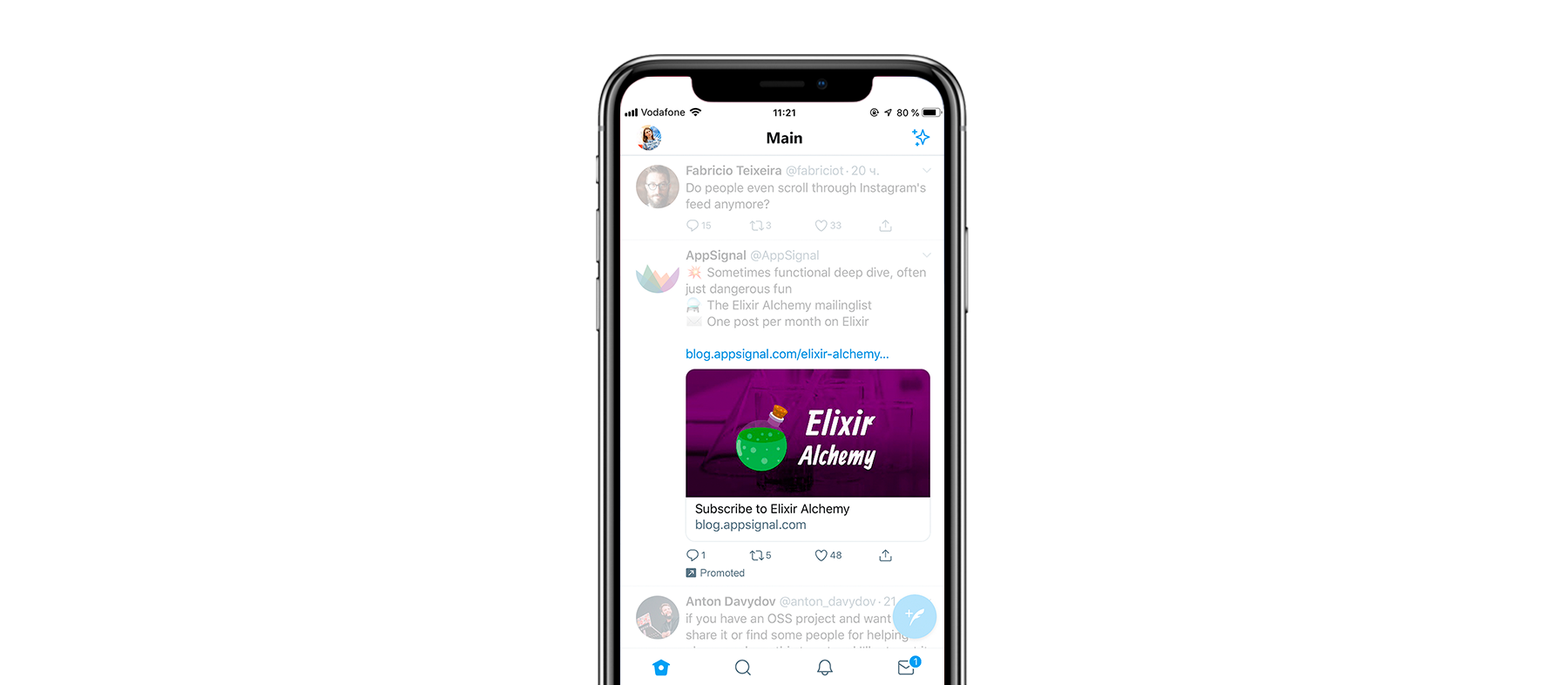
It’s no surprise that both developers and users like in-app monetization. Let’s summarize the main pros and cons of in-app ads:
| Pros | Cons |
|---|---|
| Free to use. You can still offer your product for free, attracting more users. | Distracting. There’s a risk that an ad will lead users away from your app. |
| Variety. There are several types of in-app ads, and you can choose whatever best fits the aesthetics of your app. | Annoying. Some in-app ads may be annoying and even make users angry. |
| Simplicity. It’s easy to add in-app ads to your product’s code. | Unintalls. Too many ads may result in users deleting your app. |
| Low maintenance. It’s almost effortless to maintain the performance of ads. | No cookies. In-app ads save no cookies, so the system doesn’t know whether a user saw an ad or not, meaning the same ad can be shown repeatedly. |
| CTR. Ads fit perfectly into apps that are at the top of the app stores, such as games, social networks, blogging, and news platforms. As these apps get regular traffic, the ads get regular click-throughs. | |
| Targeting. Opportunities for targeting are infinite, giving you more chances to address your audience successfully. | |
| Compatibility. You can use this ad format with others to get even more revenue. |
#2 In-app purchases
In-app purchases allow users to buy additional features or goods in an app: in-game currency, valuable items, extra time, health points, hints. If you’re not sure about using in-app ads in your mobile game, opt for in-app purchases, as they’re optional and don’t push your users. Moreover, by giving choice to your users, you can create lasting relationships with them.
Let’s consider in-app purchase models.
Freemium model
Freemium consists of two words: free and premium. Freemium means users can get an app for free with a basic set of features and upgrade later if they need extra features or services. The principle is simple: users download a free app, see the range of services provided, explore premium features with a preview, and pay to upgrade. A portion of users will convert into regular buyers. This model works really well with games, cloud services, SaaS platforms, and educational platforms. And it has more pros than cons.
| Pros | Cons |
|---|---|
| No intrusive ads. In terms of user acquisition and retention, no intrusive ads is the biggest advantage. Your users are free to make decisions themselves, so the risk of losing them decreases as they aren’t irritated while using your app. | Revenue fluctuations. This is an inevitable disadvantage of a free app. The percentage of people who will pay will probably be below 2%. However, Dropbox managed to reach a 4% conversion rate. |
| Compatibility. This model is rather universal and can be used with other approaches. You can even let users pay to get rid of ads. | Expenses. Since most of your users don’t pay, all maintenance costs are on you. This includes development and data storage, ongoing customer support, bug fixing, etc. |
| Sales. You’ll be surprised to see how many users will make in-app purchases if you add a SALE banner on paid features or premium content. | Churn. The risk any free app faces is customer outflow. As users have spent nothing on your app, they can easily abandon it. |
| Low maintenance. It’s almost effortless to maintain the performance of ads. | |
| Limited-time offers. After you’ve started a sale, place a timer. By doing this, you create a sense of urgency, which may make people want to purchase extra features even if they weren’t going to. | |
| Wide reach. As the app remains free, considerably more users will download it. The try before you buy approach always shows good results. Using a good marketing strategy, you can even make the app go viral. |
Examples of apps with a freemium business model are mobile games (Clash of Clans, Pokémon Go), cloud storage (Dropbox, Google Drive), photo editing apps (VSCO, Adobe Photoshop Express), and fitness tracking apps (Runkeeper, Nike Training Club).
App subscriptions
The subscription model is close to the freemium model, as it also lets users test the app first. This model can be exceptionally profitable for apps that have high user engagement. These include music/video streaming apps like Spotify, Netflix, and Apple Music, online periodicals, productivity apps like Todoist and Evernote, and educational apps like DuoLingo.
This model has two options:
- Non-renewing subscriptions. Users pay for the subscription only once and use it for the subscription period. As soon as the period finishes, users can choose whether to buy another subscription. The main plus here is that subscriptions must be paid manually, so there will be no unexpected bills for your users. This is a popular model for seasonal apps such as for sports, gardening, or hunting. Subscriptions usually last one, three, or six months.
- Automatically renewing subscriptions. In this case, users pay for the subscription and it renews at the end of the chosen period. The usual length of a renewing subscription is one week or month, six months, or one year. It’s a popular practice to offer a free trial before subscribing, like Netflix and Apple do with their streaming services.
Developers usually point out the following advantages and disadvantages of subscriptions:
| Pros | Cons |
|---|---|
| Price. The price of a subscription is usually lower than the price of a paid app, which appeals to users. By lowering the upfront cost with a subscription, you incentivize users to buy more and will eventually get more recurring income. | Sharing. Subscriptions don’t allow family members to share the same app across multiple accounts. |
| Commitment. This is a perfect model for news apps, blogs, book apps, and magazines. Attract your target audience, provide them with the best experience, and you’ll get a steady relationship. | Content generation. Depending on the sphere, it might be challenging to create top content to make your users prolong their subscriptions. |
#3 Paid apps
Paid apps, or premium apps, fall into the category pay once and get it all. When the app markets just started, this was the only business monetization model. It’s been eleven years since apps appeared, and this approach has lost its popularity over that time. Out of 2,686,411 apps on Google Play, only 125,492 are paid. The rest are either free or include in-app purchases.

Using this model is a risk these days, and you should take it only if your brand holds a dominant position and is in demand. Moreover, make sure there aren’t a lot of competitors, as they’ll lower their prices to attract your potential customers, thus making you reconsider your price.
Let’s list the pros and cons of this app revenue model:
| Pros | Cons |
|---|---|
| Certainty. With this model, you’ll definitely get paid for every download. | Pay gate. On the flipside, the reach is limited, as few users will pay for a product before trying it. |
| Customer engagement. Users are more motivated to use an app they’ve paid for. | Revenue cut. The app stores where you sell your app will take a cut from every download. |
| Hard work. It takes a lot of effort and promotion to convince users to buy a product. |
#4 Affiliate marketing and lead generation
Another way to get profit from your app is to find a company who wants to cooperate with you and start an affiliate program. With an affiliate program, you’ll host ads with unique affiliate links and earn commission every time a user converts into a lead or sale. To become a lead, a user needs to submit a contact form. When a lead buys your partner’s product or service, they become a customer. As with sponsorship, affiliate marketing works best if your business has the same target audience as your affiliate partners and shares the same purpose.

Ibotta, a money-saving cashback app, literally makes money on affiliate programs. The app is free to use, but it makes money via affiliate partnerships and offers cashback to users. On top of that, Ibotta makes use of video ads from some retailers.
So what awaits you with this approach?
| Pros | Cons |
|---|---|
| Easy to start. It costs nothing to join affiliate programs. There are a lot of merchants who have affiliate programs, and all you need to do to join is fill out a form. | Hard to compete. Because of the strong advantages, this app revenue model is really popular. Everyone is trying to try their hand at affiliate programs, making it a struggle for marketers to compete and retain users. |
| Countless partners. You’re free to join as many affiliate programs as you want, thus making more money. | One-time deal. As soon as your users click the affiliate link and find out about the merchant, they’ll continue buying the product directly from them. So you’ll get the commission only once, even if the new customer stays with the merchant for a long time. Some programs do offer recurring licences with fixed commission for as long as users stay loyal. |
| Easy to manage. When you start working with a merchant, they’ll provide you with everything you need: unique links, banners, videos, text. Your task is to place it and get busy with effective promotion. | Unpredictable income. Even for experienced marketers, it’s difficult to predict the behavior of users with this model. |
| Fewer financial risks. As affiliate marketing is a free model, you don’t have to invest in anything and won’t lose anything – only earn. |
#5 SMS and email marketing
These two marketing approaches have been around for decades. Email and SMS are the most popular ways of interacting with users. However, you can’t rely only on them. It’s better to combine these approaches with other types of marketing to achieve the best results. Marketing through mobile devices has proved efficient, as your potential users are probably holding one in their hands or have one within arm’s reach.
If you have a B2B product, email is the choice for you, as it’s still the preferred means of communication for entrepreneurs. Moreover, you can include bright pictures, change fonts to get attention, attach useful files, and more. On the other side, emails that are too catchy and bright are often seen as phishing or spam messages. Spam filters, in turn, work day and night to secure us and might direct marketing emails to the spam folder.
If you’re in search of an effective and low-cost tool to boost your product, opt for SMS marketing. An SMS reaches the addressee fast and is usually read right away, while with email you can’t expect such speed. Consider the differences between these two approaches in the table below.
| Pros | Cons |
|---|---|
| No internet needed. Direct accessibility is an obvious advantage and is crucial in terms of reaching the user. | Internet connection needed. Unfortunately, nobody will see that you have a seasonal sale in your app until their phone is connected to the internet. That can take an hour or two, or even days. |
| Short and sweet. With an SMS being limited to 160 characters, it takes seconds to read and understand the message. This is perfect for concise ads and great CTAs. | Long but informative. Emails are naturally longer, but this only means you can include more information about recent updates or monthly reviews. |
| Open rate. 98% of text messages get opened. | Open rate. 22% of text messages get opened. |
| Part of daily life. SMS and instant messaging are part of everyday life, especially among millenials. | For business goals. According to a report by the Radicati Group, email still occupies the leading position among means of communication in the business world. |
| No tailoring. Lacking the sender’s name, an SMS can be recognized only thanks to a profile picture or unique writing style, making it harder to attract a recipient’s attention. | Custom templates. Emails have faces. You can polish your email template with your logo, colors, motto, etc. Your users will recognize an email from you at a glance. |
| App integration. An SMS is usually sent to a phone where your app is installed. Consequently, links in the SMS can direct your users to the app. | Fewer chances to integrate. Emails can be opened on different devices, so there’s a risk that users who click the CTA won’t be directed to your app. |
#6 Sponsorships/influencer marketing
Stop and think about your users for a moment. Are they loyal? Are they engaged? Can the number of your users be attractive for other companies? If yes, why not consider a fruitful cooperation with other businesses and advertise their products or services to your audience? Or will it be better to target your millennial users and cooperate with an Instagram influencer?
Sponsorship can be integrated in your app unobtrusively. You can place a sponsor’s logo on the splash screen, in the footer, as an icon, or as a pop up. You can provide special offers from the sponsor, promote posts, etc. For instance, Subway sponsored PrePlay, a football game app, to get sports fans involved in the Super Bowl and try to predict play-by-play outcomes. It’s common practice for fitness apps to cooperate with sports wearable manufacturers to promote their fitness trackers and smartwatches. Local businesses advertise their services on social networks. Geolocation helps businesses target users with ads whenever they’re close. Here’s a good example:

The same approach can be used with influencer marketing, but here it works the other way around. You need to find an influential celebrity or opinion leader who’s respected within your target audience and start working with them. They’ll advertise and promote your app to their audience and you’ll get new users. Another idea is to invite an influencer to become your ambassador. Most brands do this. Just think of popular YouTubers advertising food delivery services or new social networking apps. Most significantly, an influencer can skyrocket your app awareness in no time.

The above-mentioned strategies have proved lucrative and show striking results fast. Nevertheless, there are some downsides. Take a look at the pros and cons in the table below.
| Pros | Cons |
|---|---|
| Phenomenal results. People tend to follow influential leaders. The difference between revenue from advertising and from promoting an app with an influencer is amazing. Opinion leaders impact purchase decisions greatly. | Time to set up. It takes much time to conduct proper market research, find the right influencer or sponsor, and work out a marketing campaign strategy. Moreover, you might get stuck on terms and conditions of your further cooperation. Prepare for a long journey. |
| Vast reach. No targeting will reach as diverse an audience as sponsorship. The bigger the audience, the more chances to appeal to them. | Performance tracking. In order to tailor your strategy for the situation, you need to develop tools for measuring success. There are many aspects to consider, from social media reach to the geographic location of users. |
| The right audience. If you collaborate with sponsors or influencers from your sphere, your user retention rate will be higher as these users will be interested in the same things as your influencers. | Negative backlash. You risk getting no ROI if you work with the wrong people or companies. Make sure your influencer or sponsor is trusted, well known, and doesn’t engage in any yellow journalism. Poor research can result in a ruined reputation. |
| Low budget. To start working with influencers, you don’t need to pay them a lot of money. You can start with a barter system, offering free services, products, discounts, or experience depending on your business sphere. | Long-term commitment. A lot of companies think it’s enough to pay for one blogger’s post and tomorrow they’ll see an ROI of 500%. Great brands build long-term relationships with their sponsors and influencers to show real commitment, authority. and credibility. |
#7 Data monetization
This app monetization model is one that users won’t notice. Have you ever thought of what you’re going to do with all the user data you collect? It’s one more business asset you can exploit. Consider monetizing this data by selling it to an interested party. Researchers, institutes, marketers, and product owners are your potential clients, as they need data to develop and optimize their goods and services. It’s a controversial method, but provided it’s done wisely, you’ll get a legal source of income. To do so, prepare user consent forms and give users a chance to agree with the conditions. The more daily active users you have, the more precise and relevant your data will be for data collectors. The main rule is to monetize only basic non-personal data:
- Device category
- Device make and model
- IP address
- Display size
- Mobile connection provider
- Network type
- Country
- Etc.
This approach changed the way Apple and Google Maps look. Thanks to 60 million registered users and geolocation licensing from Foursquare, we now can see the most interesting and popular places without leaving the Google Maps and Apple Maps apps.
Below, you’ll find the pros and cons of this approach.
| Pros | Cons |
|---|---|
| Versatility. You can apply this strategy to any type of mobile app. results. | Large user base needed. To get enough data, you need to reach at least 50,000 daily active users. |
| Usefulness. The longer you collect data, the more valuable it will be for third parties. | Risks. Often, data collectors ask for personal information, offering double the reward. Don’t overstep this line and never disclose such information. Moreover, data which is considered open in one country might be considered personal in another. |
| UI/UX integrity. Nobody will ever notice data collection because everything is happening in the app’s code. | |
| No battery drain issues. The app collects data without wasting battery or memory. |
#8 Donations
Donations and crowdfunding have been around for a while. In 2012, there were more than 450 crowdfunding platforms. Today, there are more than 400 in North America alone. Among the most popular are Kickstarter for creative and technical startups, Patreon for artists and designers, and Indiegogo for innovative entrepreneurs. Considering that such platforms charge membership fees, it’s better to opt for donations via PayPal. You aren’t likely to live on donations generated from such platforms as Kickstarter, but it’s a way to get extra income. The story of MyMiniReport, an app for players of miniature games to create visual stories of their battles, might make you hope for more, however. This app attracted the attention of almost 1,000 people who pledged a total of €10,976, which is almost €3,000 more than the owners expected.
| Pros | Cons |
|---|---|
| Easy money. This strategy allows you raise money without much investment. With crowdfunding platforms, you’ll have to cover fees only. | Donor’s pressure. As soon as you’ve raised enough money, you’ll have to show what you’ve spent it on. This is quite reasonable because you’re engaging in a negative cash to cash cycle, meaning you’re getting money before you provide the service. As startups and IT products are notorious for late delivery, you should think how to avoid it in advance. |
| Wide reach. You’ll not only raise money but advertise your product in front of thousands of people around the world. | Lack of payoff. If you don’t conduct in-depth research on your target audience and don’t run a successful promotional campaign, you’ll get nothing but wasted time and effort. |
| Concept validation. If you’re raising money to make an MVP or launch a risky startup, a crowdfunding campaign will show if your idea might be viable and cost-efficient. Interest and donations are the main benchmarks. | Fees and access to money. First of all, you won’t have any access to the funds until your campaign is over. Secondly, when the fundraising is over, a platform fee will be deducted from your total raised. The bright side is that Kickstarter doesn’t charge if you don’t raise the amount you set as your goal. |
Wrapping up
Nowadays, there are so many monetization models that any app can find one that will work. We’ve listed the most popular and feasible models. Don’t forget that you can use a mix of approaches to get as much app revenue as possible. Study the benefits and drawbacks of each approach carefully – as well as the spheres where they perform best – when planning your app monetization strategy.



